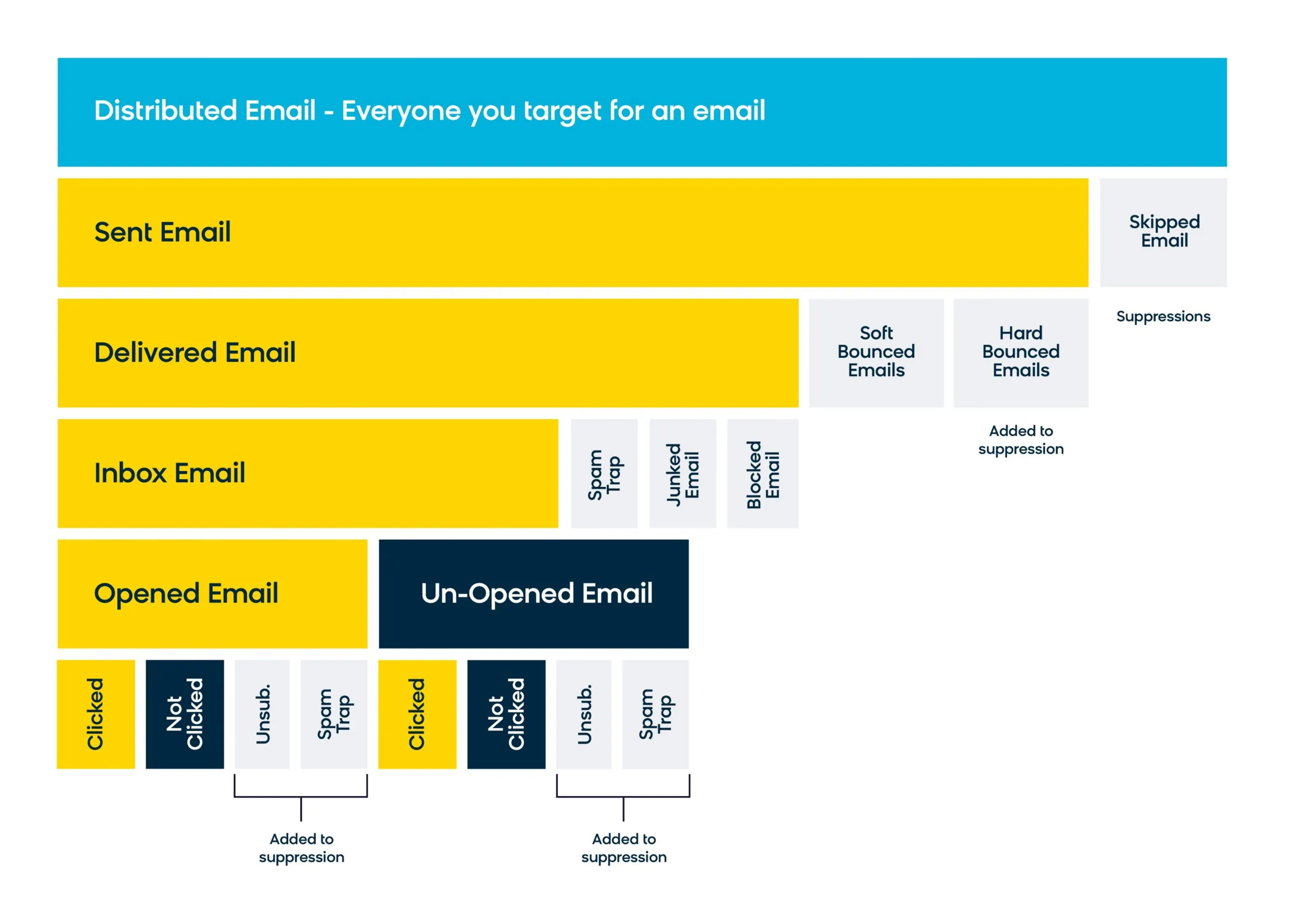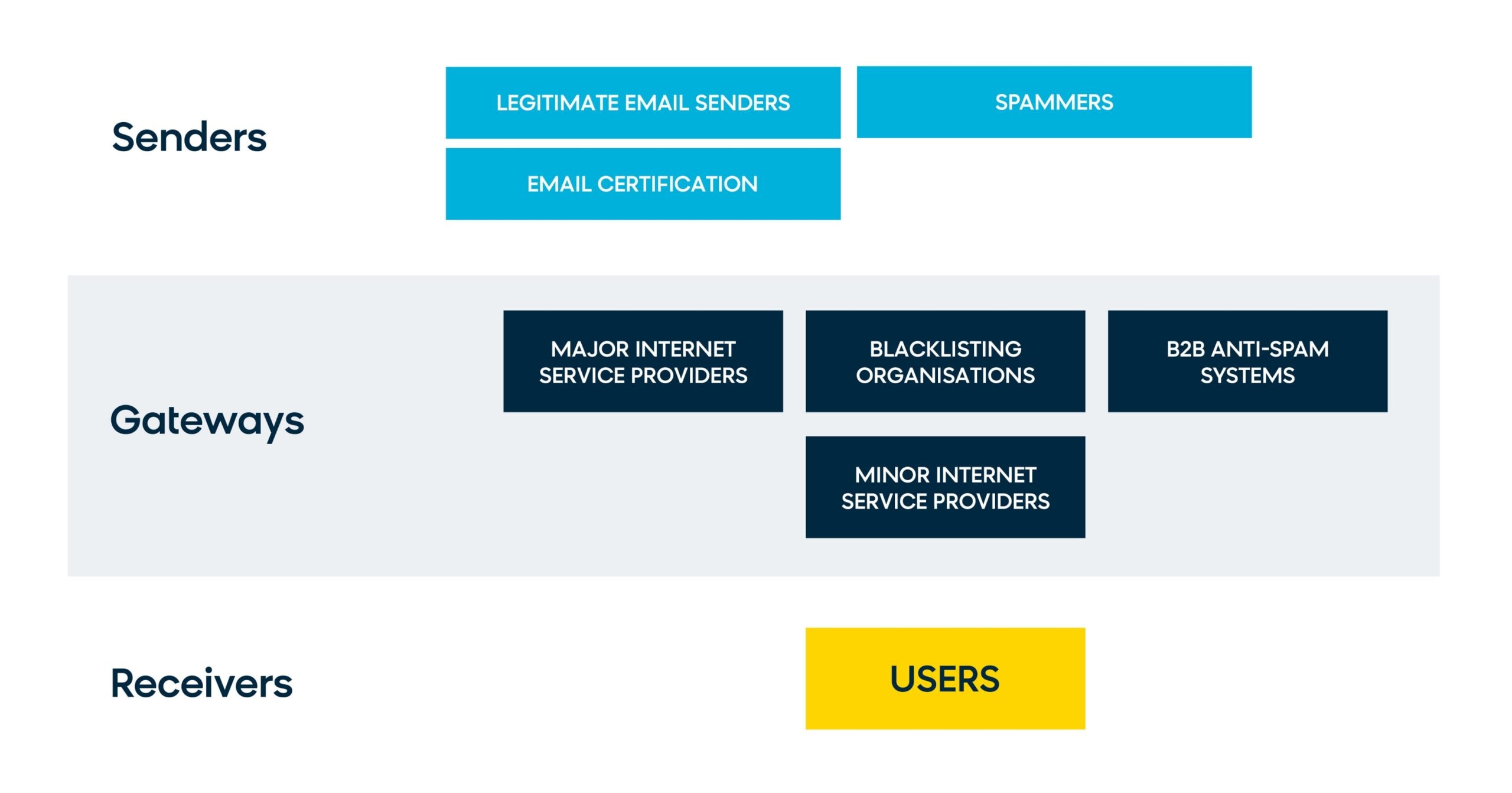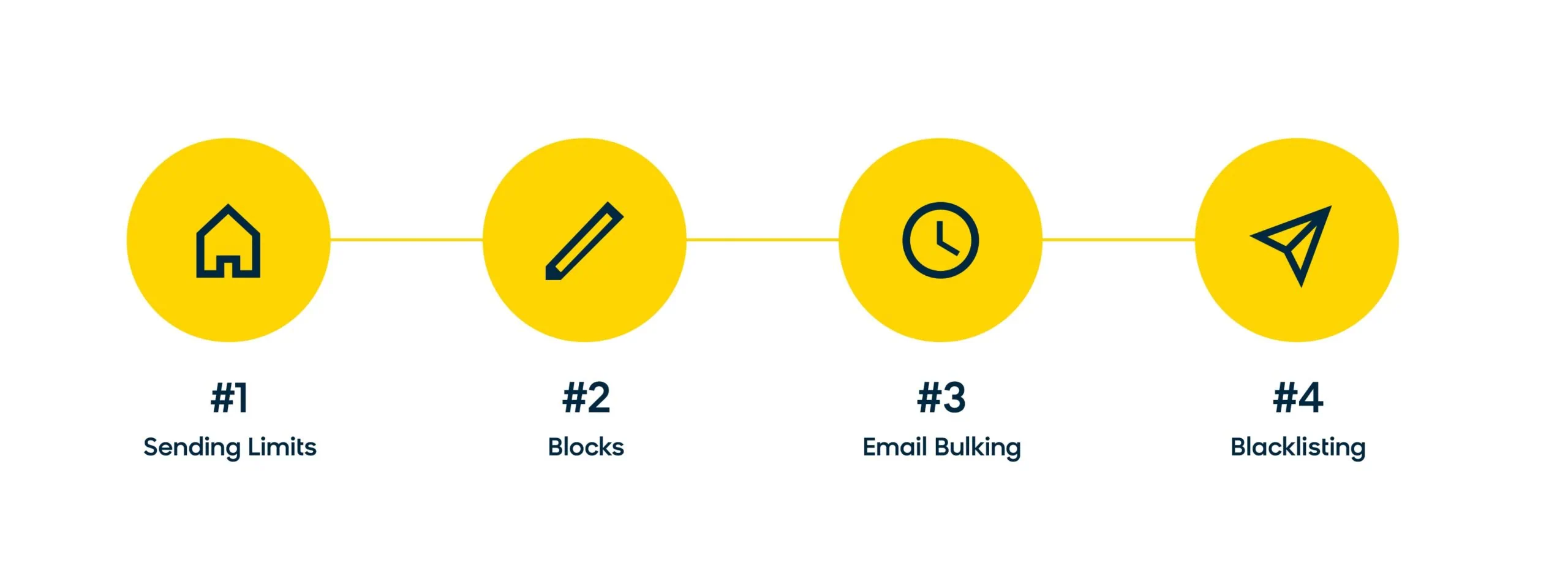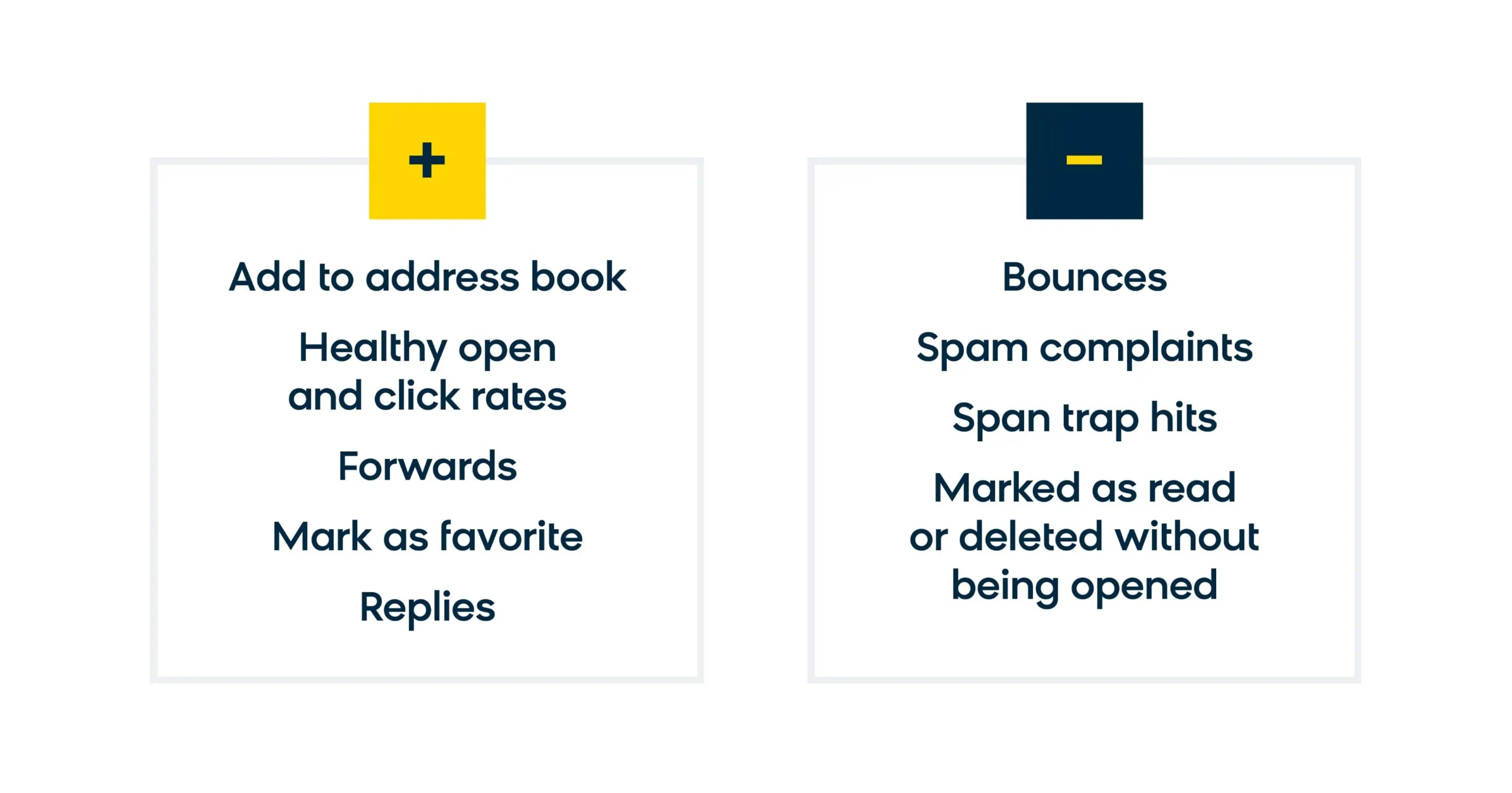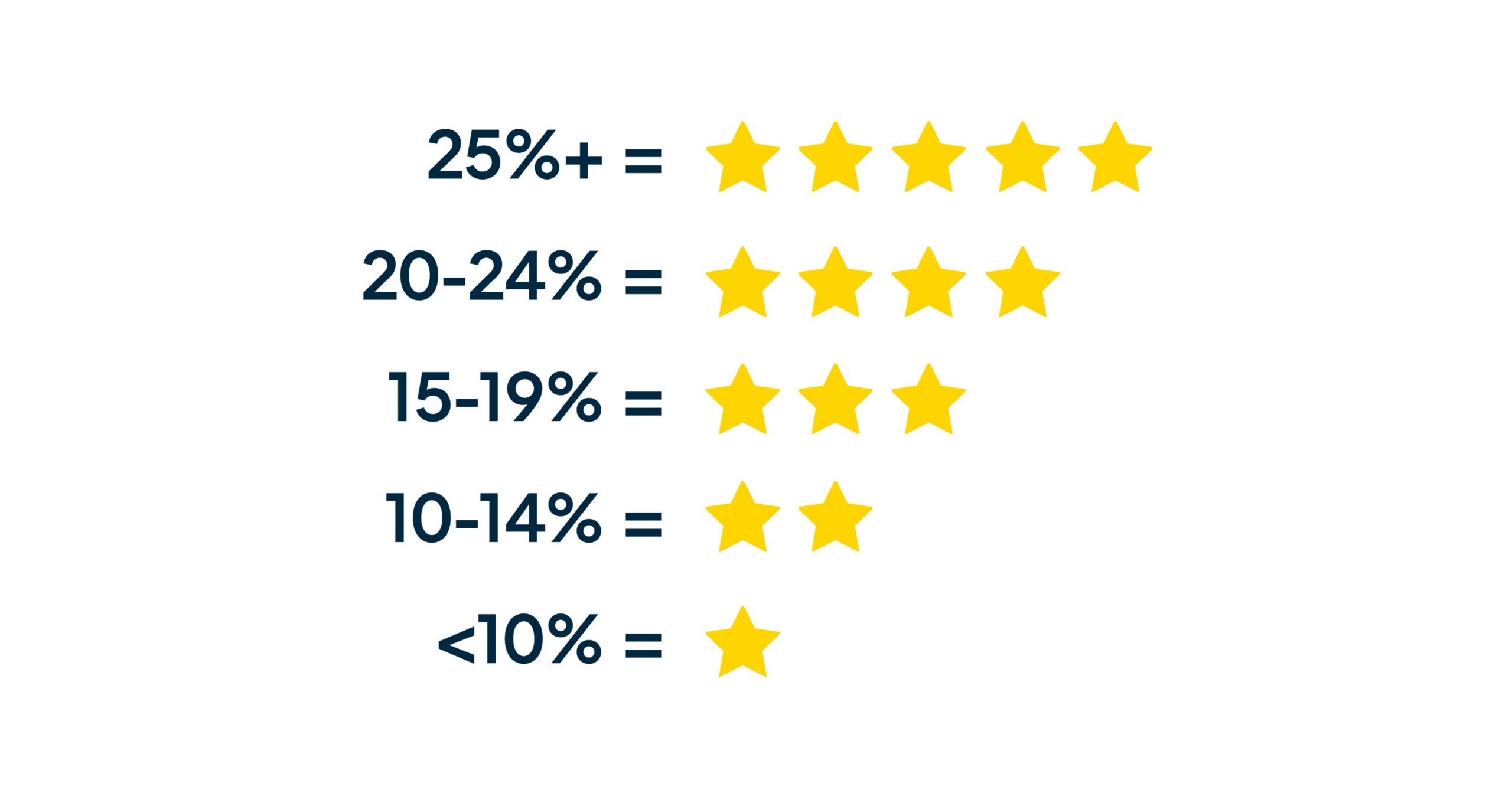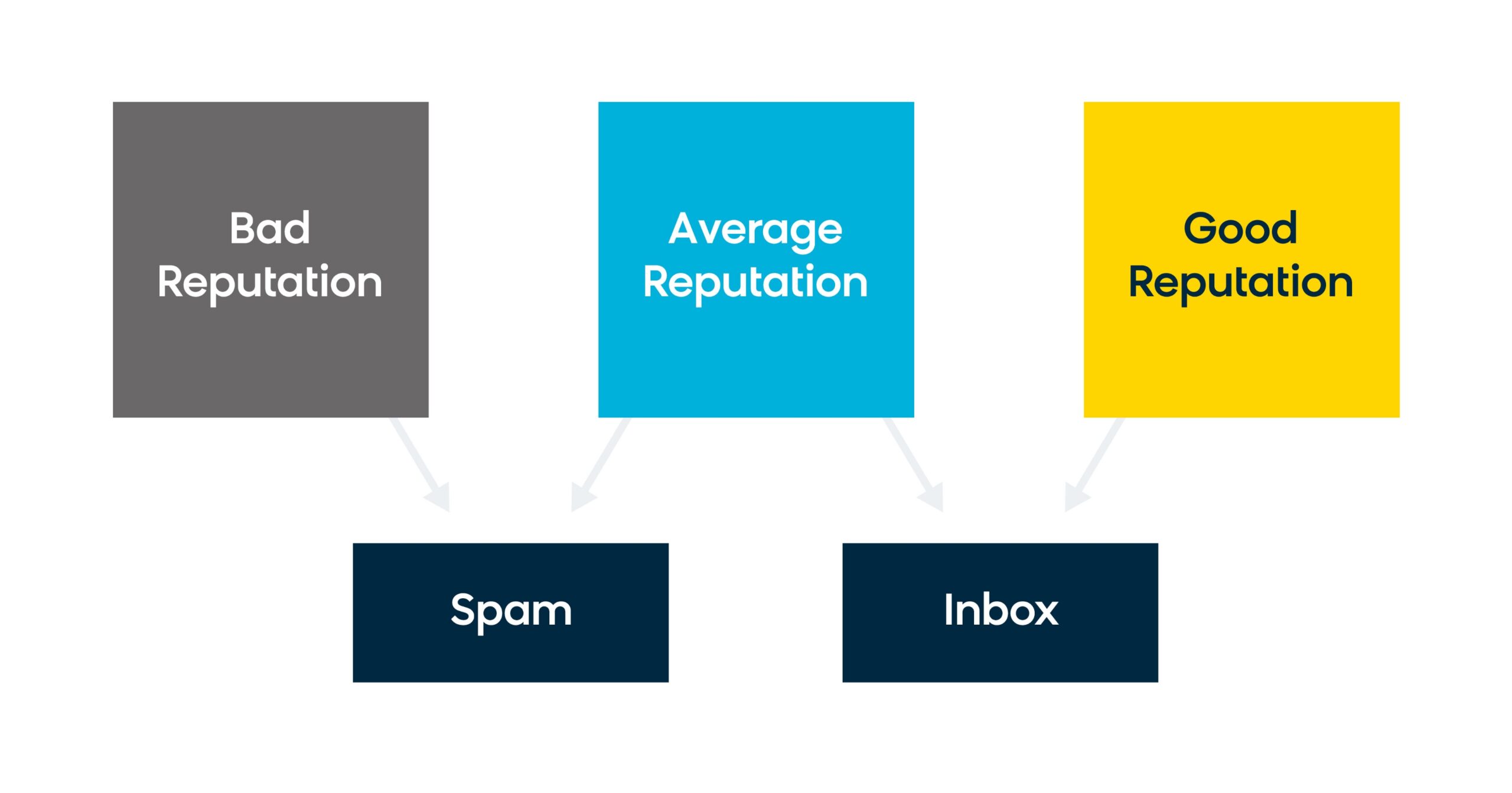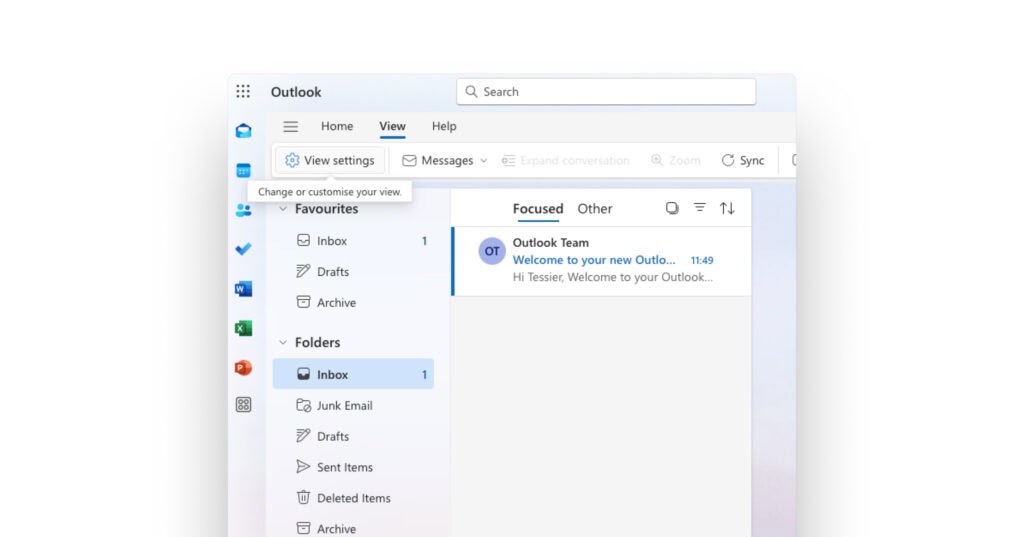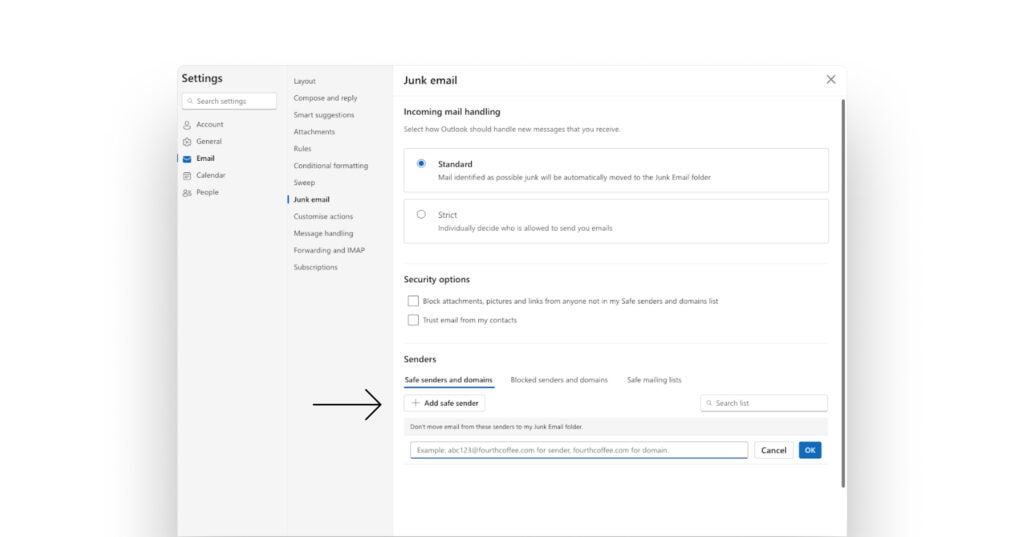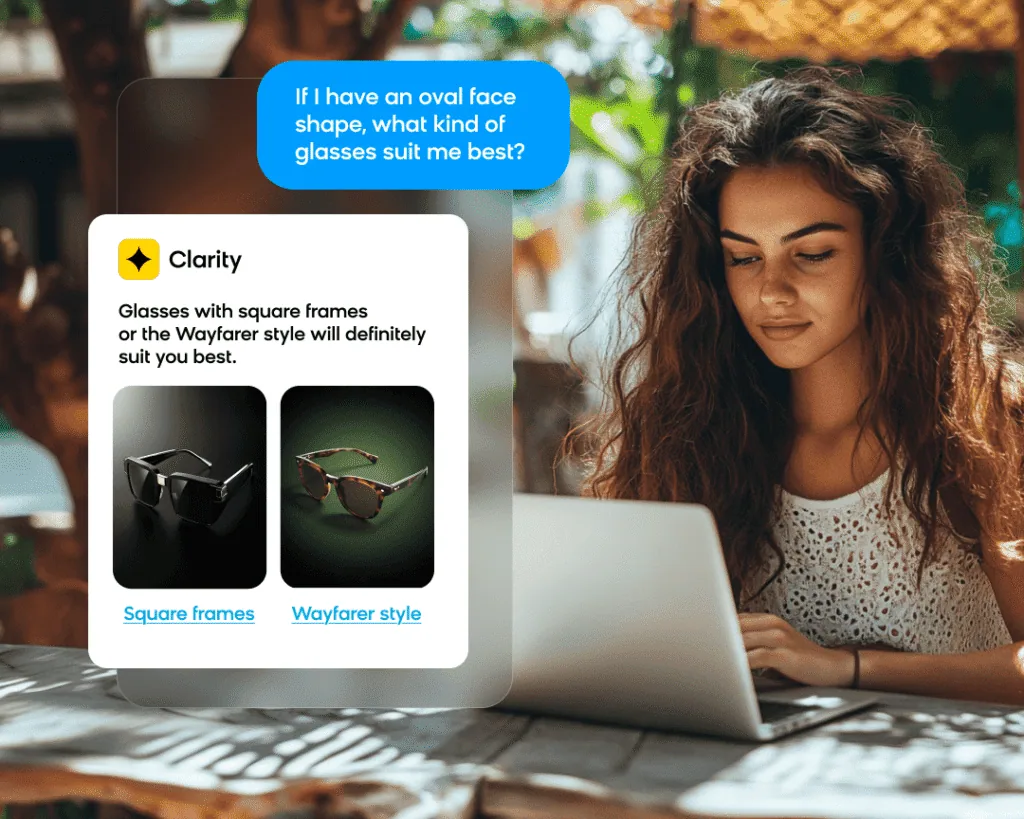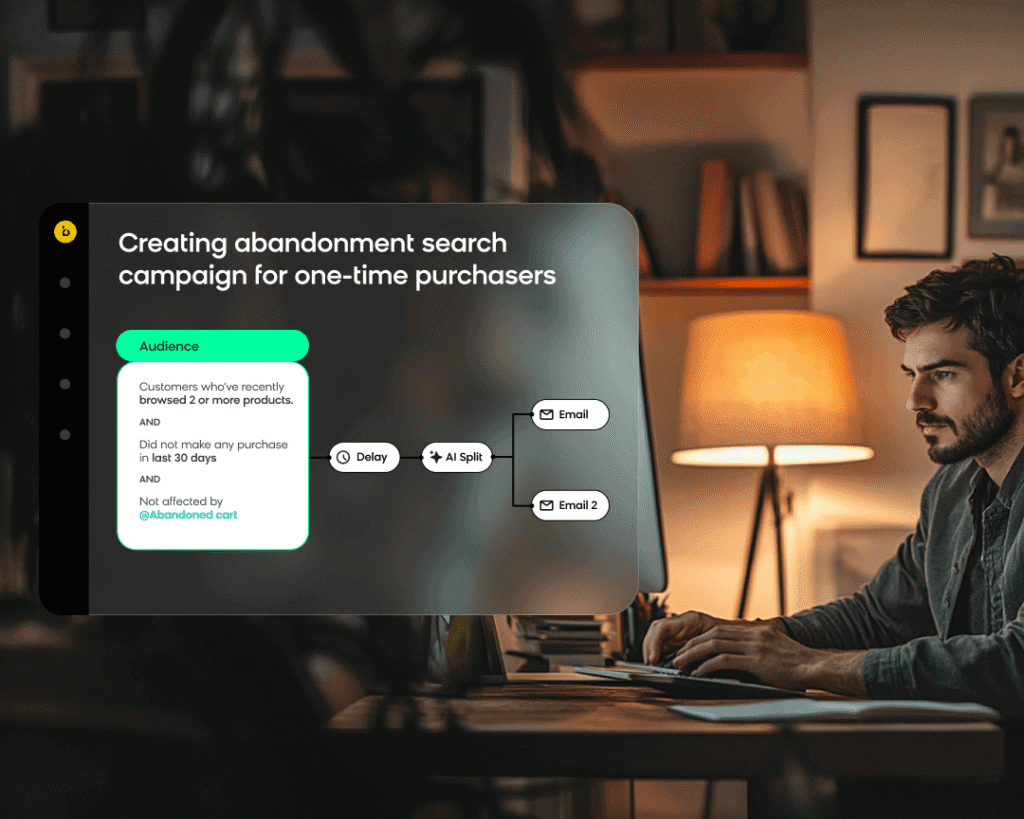Marketers love email. Regardless of all of the advances in technology or what new app is trending, email is still one of the most important channels in a marketer’s arsenal. That’s why email deliverability is so important.
Like any method of communication, there are rules and best practices you need to follow to make sure your emails reach your audience’s inboxes. And those rules are constantly being refined (like the latest deliverability changes from Google and Yahoo). So, to make sure you have all the knowledge you need to create impactful email campaigns, we’ve put together a comprehensive guide on email deliverability to help you get your emails to the inbox.
Read on to make sure you’re maximizing revenue from your email campaigns.
What is Email Deliverability?
This question might seem too simple. The objective of email deliverability is to get your email delivered, of course.
But there’s more to it than that. Let’s say your latest emailing evaluation report says you have a 99% deliverability rate. Sounds good, right? But deliverability rate can be misleading. It’s missing one important point.
You don’t want to just get your email delivered. You want to get your email to your customer’s inbox. The true goal of email deliverability is to get good inbox placement.
Spam emails are still considered delivered emails. Delivery rate tells you nothing about inbox placement. Don’t be fooled by high delivery rates — focus on inbox placement.
How do you get good inbox placement? To answer that, you need to understand the full journey of an email.
BLOOMREACH NOTE:
Wondering what outstanding inbox placement looks like? See how Bloomreach’s customers have achieved above-and-beyond inbox placement as part of the 99% Inbox Placement Club.
The Journey of an Email
Let’s say you’ve created a new email campaign as part of your Black Friday marketing strategy. How will you get it to the recipient’s inbox? Let’s walk through the steps.
Step One: Build Your Mailing List
First, you need to build your email list. This is everyone you target for an email campaign.
Step Two: Send Your Email

Why? There could be a few reasons, but the most likely answer is that a subscriber revoked their consent.
When your ESP prepares to send the mail, they evaluate consent, and the email is suppressed for that address. And while it’s never fun to see some emails getting stuck at the starting gate, this is actually a good thing — it means you can keep your contact list healthy and up to date by only sending to email contacts who actively want to receive your email marketing.
Step Three: Your Sent Mail Is Delivered
From the emails that are successfully sent, most of them should be delivered (meaning they get to where they’re supposed to go). Those that don’t get delivered are either soft bounced or hard bounced.
Bounced Email: Why Wasn’t My Email Delivered?
| Soft Bounce | Hard Bounce |
| Full inbox | Email address does not exist or is invalid |
| Sudden increase in sending volume | |
| Frequency too high for engagement levels |
What’s a Hard Bounce?
A hard bounce means that you tried to send an email to an invalid address (one that doesn’t exist). If you get lots of hard bounces, it’s a signal to ISPs that your mailing list isn’t very clean. You can clean up your list by doing an email validation.
What’s a Soft Bounce?
A soft bounce can occur for a couple of reasons.
In the past, you might get soft bounced if you try to email someone with a full inbox. These days, most email service providers offer much larger inboxes, so this is rarely the reason for a soft bounce.
Most soft bounces today occur when there is a sudden increase in email sending volume. If you typically send 500,000 emails per day, then one day suddenly send 700,000, those extra 200,000 emails might be soft bounced. ISPs like consistency, and don’t like sudden changes.
Step Four: Your Delivered Email Makes It to the Inbox… Or It Doesn’t

What’s a Spam Trap?
A spam trap is an unmanned email address, owned by an ISP. This email address might be an abandoned one that’s been reclaimed by an ISP, or it might be a brand new address created solely as a spam trap. Either way, it shouldn’t be on your mailing list.
If you send an email to a spam trap, it has a big negative impact on your sender reputation. In fact, hitting a lot of spam traps is one of the worst things you can do for your sender reputation. Don’t worry though, you can minimize your risk.
Step Five: Emails Are Then Opened or Remain Unopened
When is an Email Considered Opened?
How can you know an email has been opened if you’re not actually watching over someone’s shoulder? ESPs have found an ingenious and simple way to figure this riddle out.
Most modern email service providers include a very small image in emails they send, called a tracking pixel. When someone opens their email, that loads the image, which requires a request to be made to the server that hosts the image. This request lets the email service provider know that the email has been opened.
Step Six: The Recipient Takes Action
Once a subscriber opens your email, there’s a few different ways they can interact with your email campaign. Let’s look at the actions, and what they mean for you:
- Clicked: Your customer clicked on something in your email. This shows engagement, and is probably what you’re hoping they’ll do with your emails.
- No Click: Not great news for you, but also not too important for the ISPs. Really low engagement is a signal that you need to work on your content. Try to use different ecommerce personalization tactics.
- Unsubscribe: Also not the best news for you, since you’ve lost a contact. But ISPs understand that people’s preferences change, and customers clicking the unsubscribe link won’t have a large negative impact on your reputation.
- Mark As Spam: ISPs take this seriously. You definitely want to avoid lots of spam complaints. Customers might mark you as spam if it’s hard to unsubscribe from your emails, so make it easy for customers to unsubscribe. You also want to make your consent page easy to navigate – if customers get confused or lost in your consent page, they’re far more likely to just mark your email as spam and be done with it. Respect your customers and make it easy for them to unsubscribe.

Email Deliverability: Who’s Involved?
It takes three parties to get an email into a customer’s inbox: the senders (i.e. the business that’s sending the email), the gateways (the companies that make it possible to send an email), and the recipients (the customer). There’s more to the technical side of things with formats and protocols, but to understand email deliverability you need to start with the fundamentals.
The Senders
Broadly speaking, we can put email senders into three categories: legitimate email senders, email certification providers, and spammers.
- Legitimate Email Senders: These are businesses that have a legitimate reason to send emails. These could be transactional emails, marketing emails, newsletters, etc.
- Email Certification Providers: These aren’t exactly senders, but providers that can help your email make it to the inbox. These companies usually have good relationships with ISPs and can vouch for you as a sender, helping you to bypass ISP filters. These services usually require a monthly membership fee, plus you need to establish yourself as a reputable sender.
- Spammers: People who send unsolicited messages, usually to very large numbers of people. They can be malicious (sending malware, phishing emails, other scams) or just annoying. They’re the reason that ISPs have to be strict.
The Gateways
The gateways consist of the ISPs and other companies that control whether your email gets delivered. There are generally two categories of ISP: major internet service providers and smaller providers (including small regional providers). We’ll also include anti-spam systems and blacklisting organizations here.
- Major ISPs: From an email deliverability standpoint, you should mostly be concerned with the major ISPs. If you can achieve email deliverability with them, you should also be fine with the minor ISPs.
- Minor ISPs: The minor ISPs typically purchase versions of the processes and algorithms that the major ISPs use to monitor email sending.
- B2B Anti-spam Systems: Each business configures their anti-spam system differently, so it’s very difficult to give guidelines about how to achieve email deliverability with them. The good news is, business addresses are rarely used to sign up for ecommerce mailing lists, so these aren’t a big concern.
- Blacklisting Organizations: These companies provide reports of senders that they believe are using bad sending practices. All major ISPs use these reports, which means you do not want to end up on one. If you do, you need to make it your first priority to remove yourself from it.
Recipients
These are the people you want to receive your emails. The ISPs want to protect them from spammers, so you need to follow best practices to make it to the inbox. That means understanding the tools ISPs use to combat spammers.
How Can ISPs Affect Email Deliverability?
ISPs have a number of ways to keep spammers at bay. But since they have to manage such a massive deluge of emails, those tools can also negatively impact your email deliverability. Let’s look at what those tools are, and how you can manage each of them.
Sending Limits
For every emailer, internet service providers establish a sending limit. This is the amount of emails that they believe is acceptable and normal for you to send in some set amount of time.
Once you reach your sending limit, ISPs will soft bounce all the emails you try to send afterward until the limit resets.
For some senders, this might be a weekly sending limit. For others, it might be a daily sending limit. This depends on the volume of emails you send regularly. If you typically send emails once or twice a week, you’ll have a weekly sending limit.
How strict the limit is depends on your sender reputation. But no matter how good your reputation is, if you create a huge spike in sending volume, your emails will get soft bounced.
How Do You Manage Sending Limits?
If you want to avoid having your emails soft bounce, you need to slowly ramp up your email volume.
Let’s say you want to run a huge Black Friday email marketing campaign, with a big increase in email volume. You should start slowly ramping up your email volume at least 30 days in advance. Do this by gradually increasing the volume of your sends, so that you’ll reach your target volume in time for your Black Friday campaign.
Blocks
A block means you can’t send any emails. Not good news. ISPs typically block senders after receiving too many spam complaints, or if a sender hard bounces too many emails. A block can last indefinitely, but they are usually in the range of two days to one week.
How Do You Deal With an ISP Blocking Your Emails?
This depends on the ISP. For some larger ISPs, you will need to contact them and demonstrate that you’ve changed your sending practices. This could mean showing that you’ve reduced your mailing list to a smaller but more engaged audience.
The best way to deal with ISP blocks is to avoid them in the first place. This is a case where prevention is much better than a cure. Make sure you have a clean mailing list to avoid hard bounces, segment your mailing list so you’re only emailing engaged recipients, and make it easy to unsubscribe from your mailing list to avoid spam complaints.
Email Bulking
Bulking means that ISPs are sending your email to the junk or spam folder by default. Since most customers don’t regularly check their spam folders, most of your emails won’t be seen.
How Do You Know if Your Emails Are Going to Spam?
It’s nearly impossible to recognize if your emails are getting flagged by spam filters from most email platforms. You can, however, do some detective work using your email analytics reports.
Create a report that shows open and click rates split by ISP. Then look for a synchronized drop in open and click rates for one ISP, but not for others. That’s strong evidence that your emails are going to spam folders.
Another option is to use a seed list. This is a collection of hundreds to thousands of email addresses that are monitored, so it’s possible to see how different ISPs are treating your emails. You can include this seed list in your email campaigns to see if your emails are going to spam.
Seed lists should not be used to warm up a new IP. The accounts on a seed list won’t show any engagement, so they can negatively impact the reputation of new IP addresses, hurting deliverability in the future.
Blacklisting
Blacklisted IP addresses cannot send any emails to any ISPs that filter emails based on that blacklist. It’s a stricter form of a block, and it lasts until you appeal with the blacklisting organization and are removed from their list.
It is much easier to avoid winding up on a blacklist than to try and remove yourself from one. If you are on a blacklist, it needs to be your number one priority to get off of it. You will need to demonstrate better sending habits and an improved mailing list, which are good practices anyway.
What Do ISPs View As Negative and Positive Attributes?
For ISPs, when it comes to email deliverability, the world is fairly black and white. There are good behaviors and bad behaviors, good traits and bad traits. If you can minimize the bad and maximize the good, you’ll get more emails delivered.
Negative Attributes
- Bounces: Both hard and soft bounces are signs of bad sending habits. Hard bounces means you don’t have a clean email list. Soft bounces indicate inconsistent sending volume. Do what you can to avoid both of these.
- Spam Complaints: ISPs want to stop spammers, so this is a big negative in their eyes. ISPs have a very low tolerance for spam complaints. You should establish a threshold for spam complaints of less than 0.1% and strictly adhere to it.
- Spam Trap Hits: Spam trap addresses shouldn’t be on your mailing list, so hitting them is a big negative signal to ISPs. There are two types of spam traps: pristine email addresses and recycled email addresses. Pristine addresses are brand new accounts, added to your email lists by spambots. Recycled email addresses have been reclaimed by the ISP, usually after 180-270 days of inactivity. Hitting pristine spam traps means you have bad email collection practices, while hitting reclaimed addresses means you’re not cleaning up your mailing list.
- Your emails Marked as Read or Deleted Without Being Opened: ISPs can see when subscribers mark your messages as read or delete them without reading them. This tells the ISP that the content of your emails is potentially spammy, so it’s a negative mark on your reputation. It’s not as bad as being marked as spam, but it’s not positive, either.
Positive Attributes
- Add to Contacts/Address Book: This is a real stand-out action. It shows that the recipient wants to get your emails, and it’s very good for your sender reputation. This typically has a low conversion rate (as low as 2%), but you can find ways to encourage it for a big boost to your reputation. Add a line in the body of your email that says something along the lines of “Add us to your address book to stay up-to-date with our best deals!” This is especially effective when you have some big sales coming up, like before Black Friday.
- Healthy Open and Click Rates: Good senders send emails that get opened and clicked on. We’ll talk about this more below.
- Forwards: People forward content that they found interesting, so ISPs see this as a good thing.
- Mark As Favorite: This is a strong signal that your mail is interesting.
- Replies: Replies mean engagement, and engagement is good. In fact, ISPs view it negatively when recipients can’t reply to your messages, so avoid that where possible.
What is a Good Open Rate for Emails?
ISPs can cause email deliverability issues if you have bad open rates. And when it comes to important email marketing metrics, you want your open rates to be as good as you can get them. So what are good open rates, and what should you aim for?
Think of open rates as if they’re hotels: They can range from 5 stars (excellent) to 1 star (not ideal).
If you want to avoid email deliverability issues, you need to aim for an open rate of 20% or more. When your open rates start to go below that, you’ll run into problems.
If you’re in the 15-19% range, you’ll see occasional deliverability issues. From 10-14%, you’ll have lots of issues and you’ll need to work hard to improve open rates. Open rates below 10% indicate fundamental issues with your mailing list, your content, or both.
If you have good open rates, but still suffer from email deliverability issues, there are some other elements you can try to adjust.
Email Deliverability Factors in Your Control
Experimenting with the following elements is entirely within your control. Some of them have a big impact on deliverability, while others aren’t as important as you might think.
- The quality of your contact list. This is always important, but if you’re a new sender, or your IP is new, this is all the ISP knows about you.
- The frequency and relevancy of your emails. If you send emails every day, ISPs will be stricter with you. You absolutely need to segment your mailing list in this case. Are you sending the same message to everyone? Are you personalizing content? This will have a big impact on engagement and thus deliverability.
- Message Content and Format: This matters, but not as much as some would believe. Spammy messages from a sender with a high reputation will have less email deliverability issues than valuable messages from a sender with a poor reputation. Nevertheless, it’s good to avoid using spammy tactics.
- Sender Reputation: Extremely important, but not quite as in your control as the other above factors. It deserves more attention.
What Determines Sender Reputation?
Before we start, it’s important to note that it’s normal to fluctuate between an “average” and “good” reputation. If you have a big email marketing campaign coming up, and you need to send a lot of emails to a segment that’s not as engaged, this will lower your reputation for a bit. That’s a normal part of the business.
Sender reputation is made up of a combination of two factors: IP reputation and domain reputation. These are calculated separately, but they both have a big impact on email deliverability.
What Is IP Reputation?
All emails are sent from a computer or a server that has a unique identifying address — their IP address. It’s easy to tie this IP address to specific senders, so an IP address gives internet service providers a straightforward way to track senders. IP reputation is based solely on the IP address where the email originated from. It’s not connected to the brand that’s sending the email.
IP reputation is what gets you into the recipient server. As a mail sender, you typically either have a dedicated IP address, or you send from a shared IP pool.
What’s a Dedicated IP Address?
A dedicated IP address means that all your emails are routed through a single IP address. This IP address is not used by others, so you are solely responsible for what is sent from it.
With a dedicated IP address, email deliverability rests entirely on you. If you follow best practices, this can be a good thing. But mistakes can have a bigger impact and can take longer to recover from.
If you want to whitelist your IP address, this is much easier to do with a dedicated IP address.
Dedicated IP addresses typically make more sense for larger businesses with high volumes of emails, since they typically have the resources required to ensure best deliverability practices.
What’s a Shared IP Pool?
A shared IP pool consists of several companies sharing a number of IP addresses for sending emails. This means that deliverability is a shared responsibility. Someone else’s bad practices can negatively impact your email deliverability, but you can also benefit from increased email volume.
Smaller companies might not be able to maintain the email volume necessary to achieve a good sender reputation. By using a shared IP pool, their email volume is increased due to the emails sent by other companies, which boosts everyone’s sender reputations.
A shared IP pool also protects smaller senders from costly mistakes. If one small sender in a shared IP pool makes a mistake, it won’t have as big of an impact on them simply because there is so much more email volume coming from the shared IP pool. If they were to make the same mistake from a dedicated IP address, it would be harder to recover from.
Smaller senders will typically use a shared IP pool. The benefits of a dedicated IP address usually don’t apply to companies who aren’t sending very large volumes of email.
What’s a Domain Reputation?
Domain reputation is what gets you into the inbox. Unlike IP reputation, domain reputation is all about the brand that’s sending the email.
Domain reputation can follow your brand even if your IP address changes, or you change your email service provider. This can be a good thing if you’ve spent a long time building a good reputation.
Part of your domain reputation is your industry vertical. As a general rule, ISPs are more strict with finance and banking companies, and more lenient with retail and travel companies.
In general, domain reputation is concerned with what type of sender you are. Do you segment your lists? Do you send mail to inactive accounts? Do less engaged audiences get fewer emails? These are all factors that determine your domain reputation.
One of the best ways to manage your reputation is by segmenting your mailing lists.
Email Segmentation Best Practices
Email segmentation is extremely important in your attempts to increase your email deliverability rate as it affects email deliverability greatly.
Email segmentation is the practice of dividing your mailing list into smaller groups, called segments. When sending emails, instead of sending the same email marketing campaigns to your entire mailing list, you should send specific emails with relevant content to speak to specific audiences.
There are many ways to build these segmentations, and you can build out your segments to best suit your business needs. But let’s go over some good starting points for segmenting your audience that will help you achieve maximum deliverability and inbox placement.
Email Segmentation for Deliverability
Use data from your email service provider or your own analysis to divide your audience into the following groups:
Segment: No Consent
These are email addresses you have that have not consented to receiving emails from you. Under no circumstances should you send this segment any emails.
Recommended email frequency: Do not email this segment
Segment: New (<30 days old)
These email addresses have been added to your list within the last 30 days. This segment can receive a good amount of emails since they are typically active. It’s a good idea to set up an onboarding flow to welcome these new customers to your brand.
Recommended email frequency: 1-3 emails per week
Segment: Passive (31-90 days old, no opens or clicks)
These emails are between one to three months old, and they’ve never opened or clicked on one of your emails. Since they are relatively new contacts, there’s still a chance for them to engage with your emails. But if you’re a very frequent sender, you might want to dial back your emails so you don’t push this group away.
Passive accounts should make up less than 2% of your mailing list.
Recommended email frequency: Varies, aim for no more than 1 per week.
Segment: Active (More than 1-month-old, open or click within 90 days)
These accounts have demonstrated recent engagement with your emails, and are eligible for a relatively high email frequency. A healthy email list should consist of at least 40% active accounts. You’re in great shape if 65% or more of your list is active.
Recommended email frequency: Can receive your highest frequency
Segment: Lapsing (More than 1-month-old, last activity 91-180 days ago)
Lapsing accounts haven’t interacted with your emails in the last three months, but they had some activity within the last six months. They’re starting to tune you out, possibly because you’re sending too much repetitive content.
Try to send this segment fresh content, and focus on good personalization techniques to get more engagement. You should also move this segment to a reduced sending frequency — you probably won’t win them back by sending even more emails.
Recommended email frequency: 1-2 emails per week (for high frequency senders)
Segment: Lapsed (More than 1-month-old, last activity more than 180 days ago)
These accounts have lost all interest in your email. ISPs can see how much recipients are engaging with your emails, and if they see that someone hasn’t engaged in the last six months, they’ll typically push your emails to the spam folder.
Accounts in this segment can also be spam traps, since ISPs start to reclaim abandoned email addresses after 180 days. If you continually hit spam traps, you’ll get very negative marks on your sender reputation.
These email addresses are adding very little revenue to your business. You should consider purging them from your mailing list altogether, or creating a win-back campaign to try and re-engage them.
Recommended email frequency: 0 emails per week
Segment: Inactive (More than 90 days old, never opened or clicked an email)
Inactive accounts contribute no revenue to your business, and that is unlikely to change in the future. You should definitely not send emails to this segment, since they are decreasing all of your email metrics. Removing this segment from your mailing list will create an automatic boost in open and click rates, and will help you avoid spam traps.
Recommended email frequency: 0 emails per week, remove from your mailing list
This segmentation can be used by senders of all sizes and from all industries. It also serves as a good measure of the health of your emailing list. For a look at how to create segmentations using Bloomreach, take a look at our documentation.
Kate Nowrouzi | VP of Deliverability and Product Strategy at Sinch
Infrastructure segmentation involves your sending IPs, domains, and subdomains. For larger senders, sending should be split across several dedicated IPs that separate your transactional emails from your marketing emails to preserve your IP reputation. A similar breakdown should be done for your subdomains as well. Your marketing messages shouldn’t interfere with your transactional messages, and you can break these down with subdomains to keep your domain reputation as pristine as possible.
Read This Next: Customer Segmentation: Options Marketers Should Know
How to Add a Sender to Your Safe Senders List in Outlook or Hotmail
Ensuring that your emails land in your recipient’s inbox instead of their spam folder is crucial.
Adding a sender to your safe senders list in Outlook or Hotmail is a simple yet effective way to ensure important emails make it to your inbox and avoid getting lost in the spam folder. This not only helps you maintain seamless communication but also plays a role in improving the sender’s overall email reputation. By marking someone as a safe sender, you’re signaling to your email provider that their content matters to you, making it more likely their messages will arrive without issue in the future.
Here’s how you can do it in just a few easy steps. First, log in to your Outlook or Hotmail account and head to the settings menu. You’ll find this by clicking the gear icon in the top-right corner of the screen.
Once there, scroll to the bottom of the settings menu and choose “view all Outlook settings.” After opening the settings window, go to Mail > Junk email to find the safe senders list options.
Once in the junk email settings section, click on “add” under the safe senders and domains section. Enter the email address or domain you want to add (e.g., “[email protected]” or “example.com”) and press save to confirm your choice.
The sender will now be marked as safe, and their emails will bypass spam filters going forward.
By taking these steps, you’re not only decluttering your inbox but also improving the efficiency of email communication. Adding trusted contacts to your safe senders list ensures that critical messages won’t be missed, giving you peace of mind and a hassle-free inbox experience.
How to Improve Email Deliverability
To wrap up, we’ve compiled a list of some of the most important do’s and don’ts for email marketers. Check and see if you’re following emailing best practices, and get some ideas on where you can improve.
Email Deliverability Things to Avoid
- Buying, renting, or harvesting email addresses. You absolutely need to know the quality of your mailing list. If you’re buying addresses in bulk, it’s very difficult to know exactly what you’re getting. Plus, this can be a violation of guidelines like the GDPR.
- Sending emails to people who don’t want them or can’t receive them. This can also put you in violation of the GDPR, and it’s likely to get you more spam complaints.
- Sending to group email addresses (e.g. info@, sales@). ISPs want emails to be sent at an individual level and don’t look kindly upon this activity. Plus, there’s always the chance that someone in the email group will mark your message as spam…not good.
- Sending emails to old or inactive email addresses. These accounts aren’t adding any revenue to your business, and they’re hurting your metrics. It’s a good idea to cut off any email addresses that have no engagement within the last 180 days — transfer these accounts to a re-engagement (or even a re-permission) program.
- Sending emails with spammy language. USING ALL CAPS, ending sentences with lots of punctuation (!!!), using too much “super-hot exclusive sale!” terminology…the ISPs don’t like any of it, and neither do your customers.
Tips on Improving Email Deliverability
- Sign up to Google Postmaster, Yahoo Feedback, Microsoft SDNS. These services will give you insights into your reputation with these ISPs.
- Have a memorable email sign-up process. If people remember signing up for your emails, they’re less likely to mark you as spam. Definitely use a double opt-in sign-up (where people have to click a link in their email to confirm their registration). A good double opt-in program should have a 70% success rate. You should also use CAPTCHA on your registration page to avoid spambots from polluting your list.
- Use email engagement to manage email frequency. Only your most engaged audiences should receive the most emails. You can use list segmentation to help manage this. Some platforms (including Bloomreach) offer built-in frequency management.
- Score your content with spam checking tools. You don’t want your emails to get blocked for bad coding. You can find free tools online to help you out.
- Review your campaign reports at an ISP level. Monitor bounce and complaint rates at an ISP level and look for signs of your emails being bulk sent to spam for certain ISPs.
- Check that your emails render for everyone. Some email tools (including Bloomreach) show you how your email will render across devices and browsers. Emails that don’t render properly can result in no engagement or spam complaints. Emails that render correctly also increase your trustworthiness in the eyes of the ISPs.
- Maintain a proper text-to-image ratio. ISPs prefer more text than image, with an ideal ratio of 60:40. Try to also limit your email size to a maximum of 100KB.
- Make it easy to unsubscribe from your emails. It might seem counterintuitive, but the alternative is for users to report you as spam. Respect the desires of your audience.
- Use personalization. Personalization increases engagement rates, which is good for your sender reputation and your revenue. Make your emails as tailored as possible, and go beyond just using first names. Incorporate things like behavioral data, purchase data, and user preferences.
Of course, deliverability isn’t the only challenge you’re facing. You’ll also want to work on improving your personalization tactics and improving your testing through improved customer data tactics in your commerce strategy.
Using Email Software for Better Deliverability
To make sure your email deliverability is the best it can be, you need the best tool for the job. Choosing the right email deliverability software can be a deciding factor for how well your campaigns perform — you need to make sure it has the capabilities necessary to elevate your email marketing, reach your audience, and stay out of the spam folder.
At the bare minimum, email marketing software needs to offer features designed to tackle common deliverability issues. For instance, it needs to help you maintain a healthy sender reputation, facilitate regular cleaning of email lists, and help you remove inactive or unengaged subscribers.
Moreover, your email software needs to include testing tools that offer previews of how emails will appear in various email clients. These previews can highlight potential issues, such as broken links or problematic formatting, that could trigger spam filters. By identifying and rectifying these issues before sending, the chances of successful email delivery increase.
Comprehensive reporting and analytics is also essential. Thorough insights allow you to fully understand email performance and make data-driven decisions to enhance deliverability.
But that is just the baseline of what your email software should include if you want to improve your email deliverability. Customer segmentation, advanced targeting, and the ability to craft personalized campaigns for every recipient is the key to landing in your customers’ inboxes and enticing them to engage with your campaigns. And that’s exactly what you get with Bloomreach Engagement.
Rely on Bloomreach to Help Improve Your Email Deliverability
If you’re looking to drive more powerful email marketing results by improving your email deliverability, look no further.
Bloomreach Engagement is the tool you need to elevate your email marketing program with advanced targeting and AI-powered personalization without sacrificing deliverability and ease of use. Target the right audience segments and send personalized email campaigns that drive revenue with Bloomreach.
If you’re ready to see the financial difference that improving your email deliverability can have for your company, schedule a demo to learn more.


